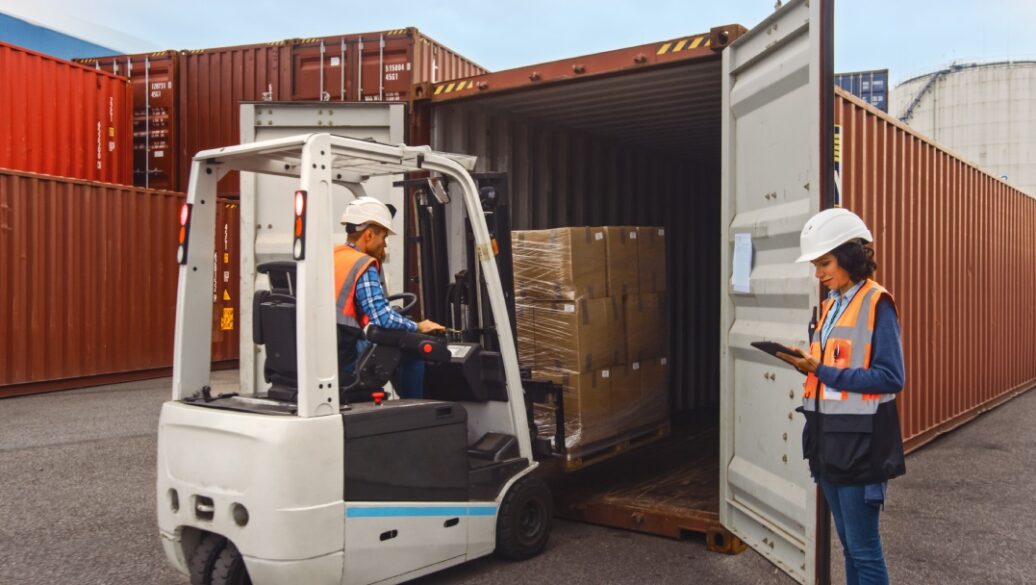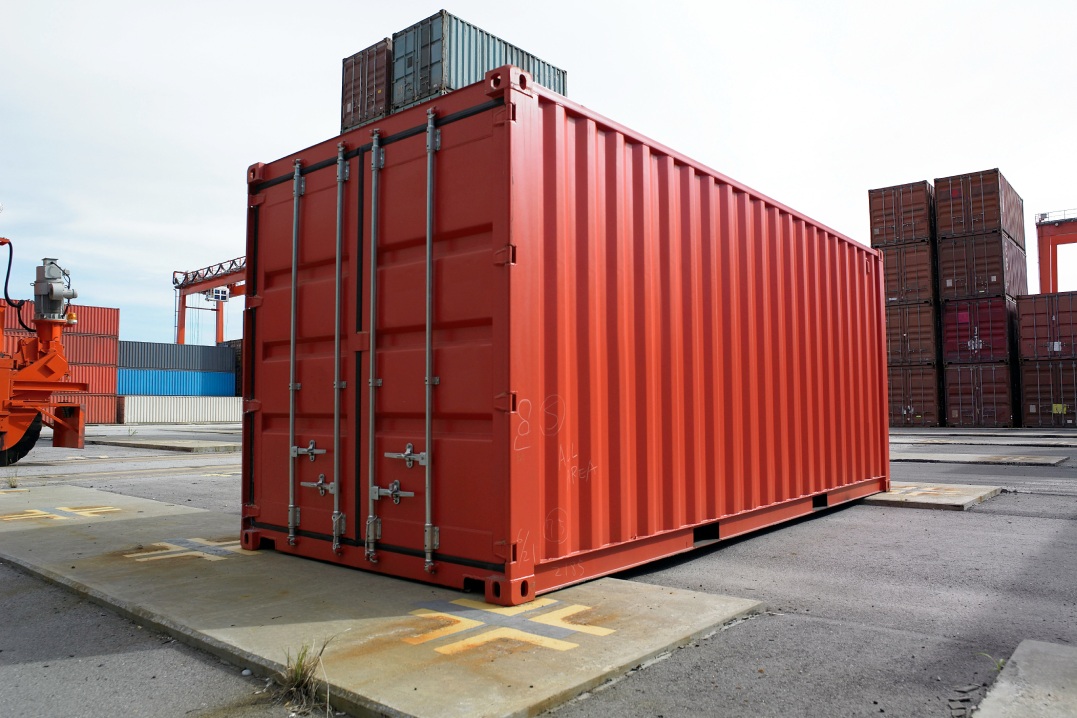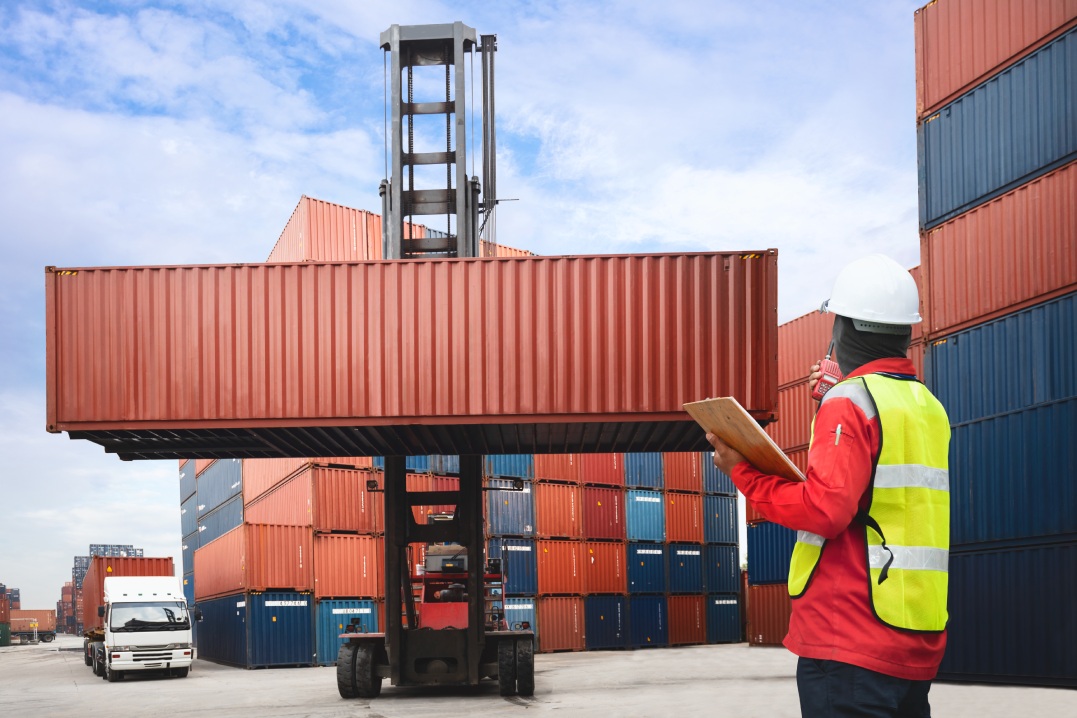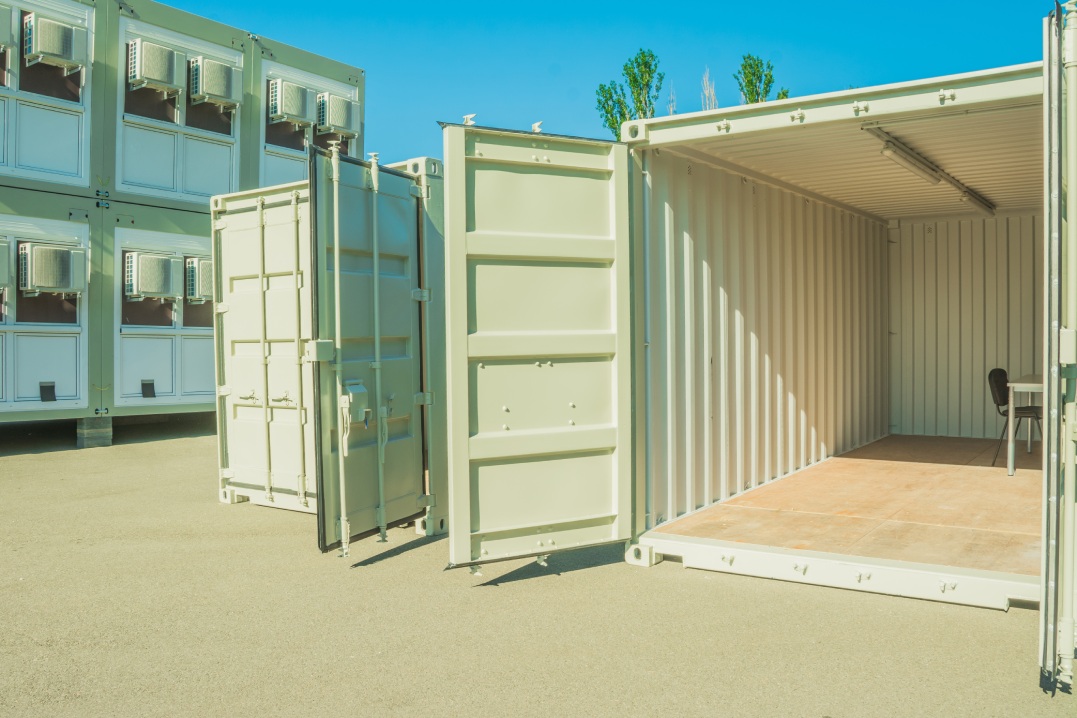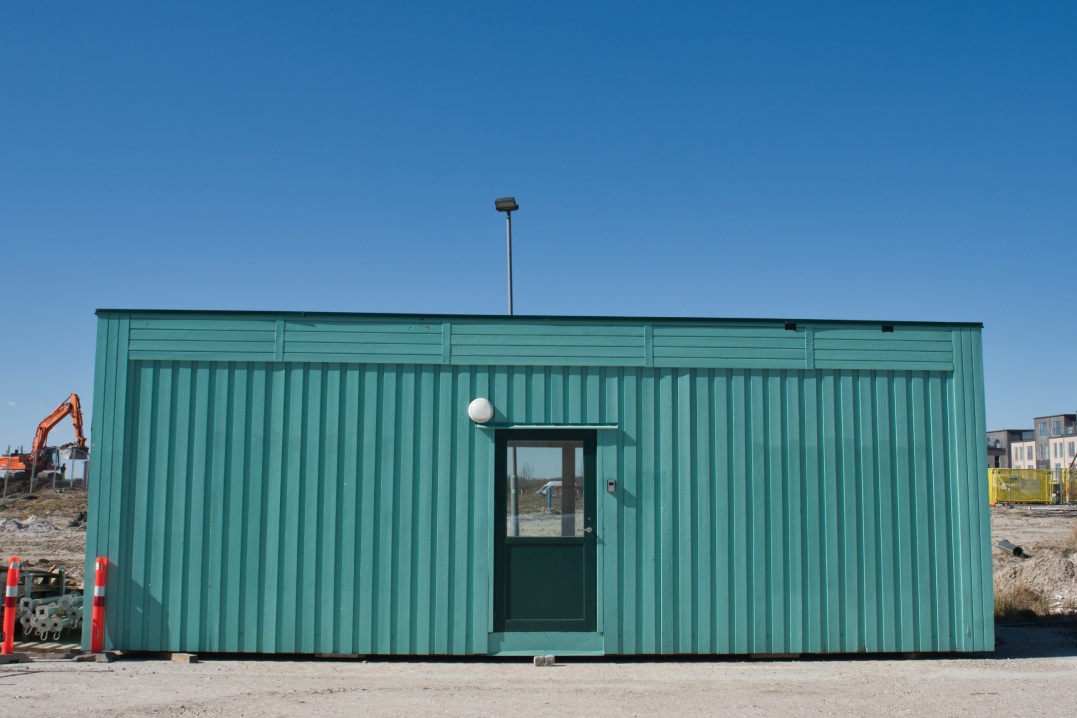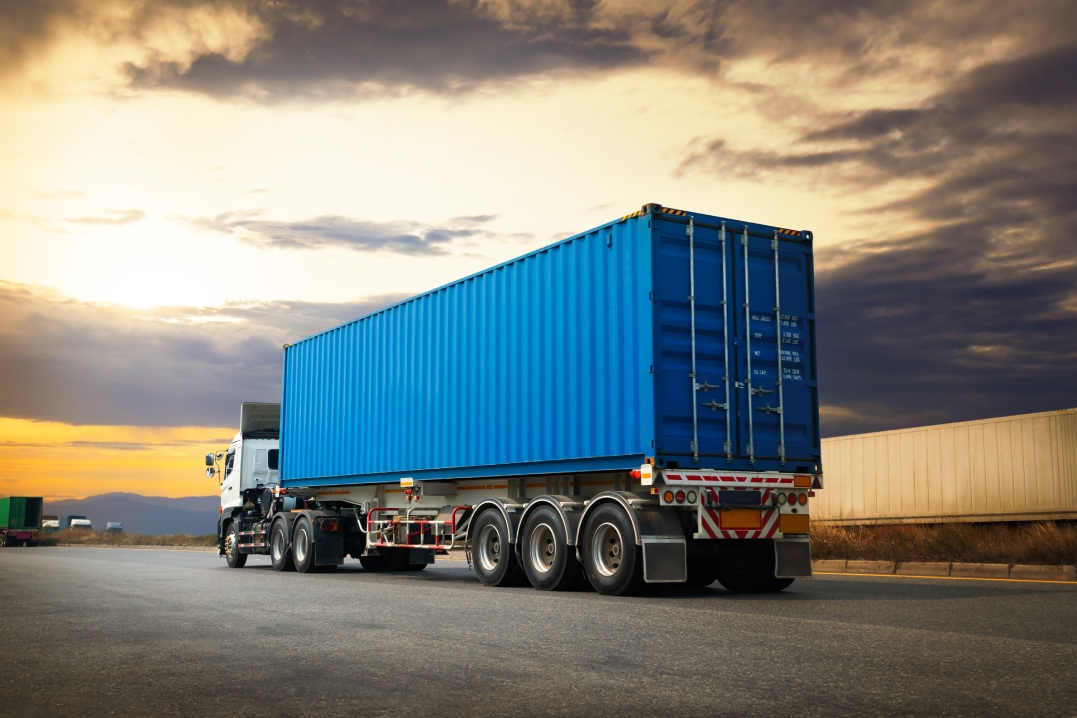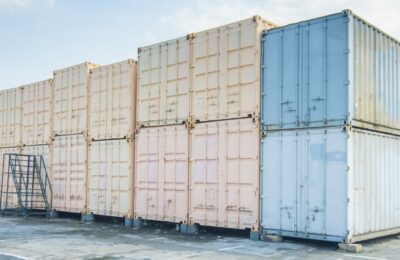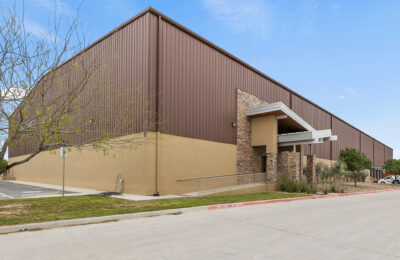In the storage and shipping industry, the terms “Conex box” and “shipping container” are often used interchangeably. For someone new to the field, it’s easy to see why: both are rugged steel boxes, seemingly made for similar purposes.
However, these containers each have unique histories, designs, and applications that make them suitable for different needs. Understanding these nuances is essential for choosing the right container, whether you’re a logistics professional, DIY enthusiast, or construction manager seeking durable and secure storage.
In this article, we will unpack the differences between Conex boxes and shipping containers and provide insights into their best applications, strengths, and limitations to help you make the best decision.
Understanding the Basics: Conex Boxes vs Shipping Containers
To start, it’s helpful to define each type of container, clarifying what they are, their historical roots, and why these differences matter.
What is a Conex Box?
Conex boxes, short for “Container Express,” trace their origins back to the Korean War era. As military logistics became more sophisticated, the U.S. Army developed these containers to transport supplies and equipment to the front lines securely.
These boxes proved invaluable, offering security and durability in the face of rugged conditions. Constructed from heavy-duty steel, Conex containers provided a significant improvement over their aluminum predecessors, which were more prone to damage and theft.
Over the years, Conex boxes evolved beyond military use, becoming reliable storage and transportation solutions across various industries. Their robust structure, combined with built-in locking mechanisms and secure door designs, make them suitable for a variety of storage needs.
Today, Conex containers are used across industries for applications ranging from construction site storage to modular offices and even mobile housing. Their history lends them a level of reliability and durability that many rely on for secure, weather-resistant storage solutions.
What is a Shipping Container?
Shipping containers, often referred to as “cargo containers,” emerged from the need for standardized, efficient transport of goods in the global trade sector. Developed in the mid-20th century, these containers transformed international logistics, allowing goods to be moved seamlessly across different transportation modes—sea, rail, and road.
Typically built from corrosion-resistant Corten steel, shipping containers are designed to endure extreme weather conditions and the rigorous demands of long-distance travel.
The International Organization for Standardization (ISO) played a critical role in standardizing shipping container sizes and features, making it possible for containers to be universally stackable and compatible with handling equipment worldwide.
Standard sizes of 20 and 40 feet enable efficient use of space on container ships, while additional features such as watertight seals and reinforced corners make them ideal for protecting cargo over extended journeys.
While their primary purpose is intermodal shipping, their durability and standard dimensions have made shipping containers popular for a range of secondary uses, from storage units to modular commercial spaces.
Conex vs Shipping Containers: Key Differences
While both types of containers share similarities, they differ in ways that can impact your decision-making. Here’s an in-depth look at what sets them apart:
Physical Characteristics
Conex containers are often slightly smaller, built with reinforced doors, heavy-duty locking mechanisms, and a structure that reflects their original purpose in military logistics.
They are particularly known for their security and resilience. Although they can vary in size, Conex boxes are typically built to withstand extreme weather, rough handling, and even vandalism, making them a popular choice for high-security storage on construction sites or other temporary locations.
In contrast, shipping containers adhere to standard dimensions—20 and 40 feet in length—established by ISO. They are made from corrosion-resistant Corten steel, which enables them to endure the moisture and salt exposure of sea travel.
With standardized sizes and structural features, shipping containers are designed to be stackable and easily transferable across transportation modes, which enhances their utility in global trade. While both container types offer durability, the shipping container’s larger, standardized structure allows it to be used more flexibly across different logistics systems.
Usage
Conex boxes, originally designed for secure, high-stakes transport, have found a natural fit in civilian settings—especially in construction, where they provide reliable, on-site storage for tools, materials, and heavy equipment. With their modular design and ease of customization, Conex boxes also work seamlessly as temporary buildings, mobile offices, pop-up shops, and even as residential units.
Made from tough, weather-resistant steel, these boxes are built to last, safeguarding their contents even in tough environments. It’s why they’re being repurposed everywhere—from modular homes and stylish retail spaces to emergency shelters that need quick, secure setup. You’ll even see Conex containers in urban farming projects, where they help maximize limited space for community gardens and small-scale agriculture.
Shipping containers, by contrast, retain a more standardized role within international shipping and freight industries. Their corrosion resistance, standardized size, and weatherproof build make them highly suitable for transporting goods over long distances.
While their primary purpose remains the transportation of goods, they are increasingly used in permanent storage facilities, creative spaces, and even architectural projects. However, because they are larger and heavier than Conex boxes, they are less practical for smaller or more localized storage needs.
Conex vs Shipping Containers: Common Uses and Applications
The unique design features of both Conex boxes and shipping containers make them adaptable across industries. Here’s how each is commonly used:
Conex Boxes
Construction Sites
Conex containers are ideal for on-site storage of valuable tools, materials, and equipment. With their high-security features and durable structure, they protect against theft and weather damage, while their portability allows for easy relocation as projects progress.
DIY and Modular Builds
For DIYers and builders, Conex boxes provide an affordable and adaptable option for constructing everything from custom garages to tiny homes. The modular nature of Conex containers allows them to be easily customized and retrofitted with windows, doors, and insulation, creating flexible living or working spaces.
Temporary Offices
In areas with limited infrastructure, Conex boxes can be transformed into comfortable, temporary workspaces. Modifications like lighting, insulation, and even plumbing make them suitable as mobile offices for construction sites, remote project locations, or event management spaces.
Emergency Shelters
Conex boxes provide quick and effective housing solutions in disaster-stricken areas where temporary shelters are essential. Their sturdy construction offers a safe, resilient space that can withstand harsh conditions, providing secure accommodation when it’s most needed.
Urban Greenhouses and Gardening Spaces
In cities where space is limited, Conex containers are being used as greenhouses and urban farming containers. With minor modifications, they can become efficient, space-saving solutions for urban agriculture, enabling communities to grow fresh produce even in densely populated areas.
Educational Facilities
Conex boxes are increasingly used as classrooms and libraries, particularly in resource-constrained regions. Their flexibility allows schools to expand with minimal construction costs, providing safe, adaptable learning environments that support community needs.
Art Installations and Galleries
Artists and designers have embraced Conex boxes for their unique, industrial aesthetic. They’re used as pop-up galleries, art installations, and even immersive retail spaces, adding a modern touch to exhibitions and events.
Pop-Up Shops and Cafes
For businesses exploring new markets or looking for temporary retail spaces, Conex boxes offer an ideal solution. Their portability and ease of setup make them perfect for pop-up stores, cafes, or mobile kiosks that need to adapt to changing locations or events.
Shipping Containers
Intermodal Freight Transport
Shipping containers form the backbone of the global shipping industry, moving goods across sea, rail, and road seamlessly. With standardized sizes and robust structures, they offer protection against the elements and ease of transfer between different transport modes.
Permanent Storage Units
Shipping containers are increasingly popular in storage facilities and for private storage on farms, construction sites, or residential properties. With their strong, rust-resistant design, they provide long-term, secure storage for items ranging from heavy machinery to personal belongings.
Pop-Up Shops and Retail Spaces
The spacious, adaptable design of shipping containers makes them ideal for pop-up shops and temporary commercial spaces. Their robust structure and watertight build provide excellent protection, while their industrial aesthetic adds a unique touch to any business.
Conex Boxes vs. Shipping Containers: Pros and Cons
Breaking down the benefits and limitations of each option helps you choose based on what matters most for your specific project.
Conex Box Pros
Enhanced Security
Initially built for military purposes, Conex containers have reinforced doors, additional locking mechanisms, and thicker steel for increased security.
High Adaptability
Known for being highly modular, Conex boxes can be transformed into a variety of configurations, making them suitable for projects ranging from storage units to mobile housing.
Weather Resistant
Made to withstand extreme conditions, Conex boxes are designed to keep contents safe from harsh weather, rough handling, and even vandalism.
Conex Box Cons
Transport and Modification Requirements
Moving these heavy-duty containers can demand considerable resources and expertise. Due to their weight and durable structure, transporting them requires specialized equipment.
Zoning Regulations
Local zoning laws may restrict the use of Conex boxes in certain areas, particularly for residential or commercial structures. These regulations can limit options and add complexity for those looking to use Conex boxes in urban or regulated settings.
Limited Size Options
Conex boxes are generally available in fewer sizes, which may not be ideal if larger storage space is required.
Higher Modification Costs
Because they were initially designed for specific military purposes, modifying a Conex box for commercial or residential use can sometimes be more costly and time-consuming than working with a standard shipping container.
Shipping Container Pros
Standardization
With consistent dimensions, shipping containers are perfect for transport and stacking, making them versatile for both logistics and creative applications.
Cost-Effective for Shipping
Since they’re designed specifically for intermodal transport, shipping containers can be more economical than Conex boxes for international shipping needs.
Durability and Security
Constructed from Corten steel, these containers are highly resistant to rust, weather damage, and impacts, making them a reliable choice for secure storage over long distances.
Shipping Container Cons
Less Customizable
While it’s possible to modify a shipping container, they’re not as easily customized as Conex boxes, which were designed with more flexible use cases in mind.
Heavier and Bulkier
Shipping containers, especially the 40-foot models, are larger and heavier, making them difficult to move and potentially less suited for smaller or residential projects.
Choosing the Right Container Provider
When selecting a container provider, it’s essential to consider a few key factors to ensure you get the best product and service for your needs.
- Start by evaluating the range of options they offer. A reliable provider should carry a variety of container sizes and types to meet different project requirements, whether for storage, transport, or a creative build.
- Look closely at the condition of the containers, whether new or used, and check for minimal rust, dents, and solid, watertight seals.
- Customization services can also be a major advantage—especially if you’re planning to modify the container with additions like windows, doors, or insulation. This is particularly important if you’re repurposing containers for specific uses, such as housing, offices, or retail spaces.
- Look for clear, competitive pricing and full information on any additional costs, such as delivery fees or modification expenses.
- To gauge the provider’s reliability, check reviews and testimonials from previous customers. A good reputation often reflects quality service and dependable customer support.
- Make sure the provider can deliver the container to your chosen location and discuss any potential logistical challenges.
By considering these factors, you’ll be better equipped to choose a container provider in McAllen, TX, who meets your needs effectively.
Choose the Right Shipping Containers With Us!
Choosing between a Conex box and a shipping container ultimately depends on your specific requirements. Here’s a quick recap to help:
- For high-security, on-site storage or modular building projects, a Conex box is likely the best solution. Its military-grade durability and ease of customization make it perfect for temporary workspaces, creative housing, or secure storage on construction sites.
- For intermodal shipping, secure long-distance storage, or large-scale commercial projects, a shipping container is a practical choice. Its standardized size, weather-resistant build, and cost-effectiveness in long-haul transport make it ideal for businesses in need of reliable and consistent storage.
Ultimately, the best choice depends on factors such as intended use, necessary modifications, and budget. Whichever container you choose, both Conex boxes and shipping containers offer robust, versatile solutions for a wide range of storage, transport, and modular building needs.
CTC Distribution offers new and used mobile shipping containers for a variety of applications on sale, rent, or lease in McAllen and Edinburg, TX. Reach out today to find the ideal storage solution for your business or personal needs!



